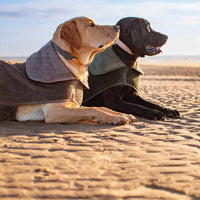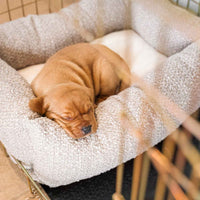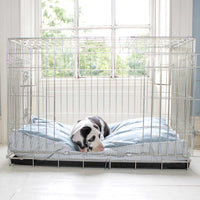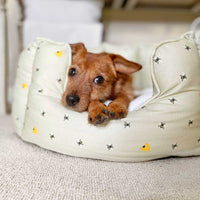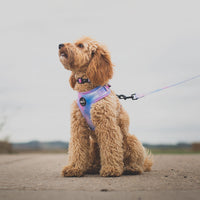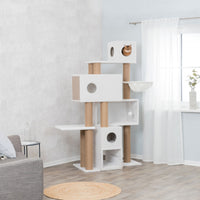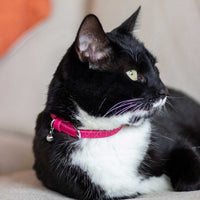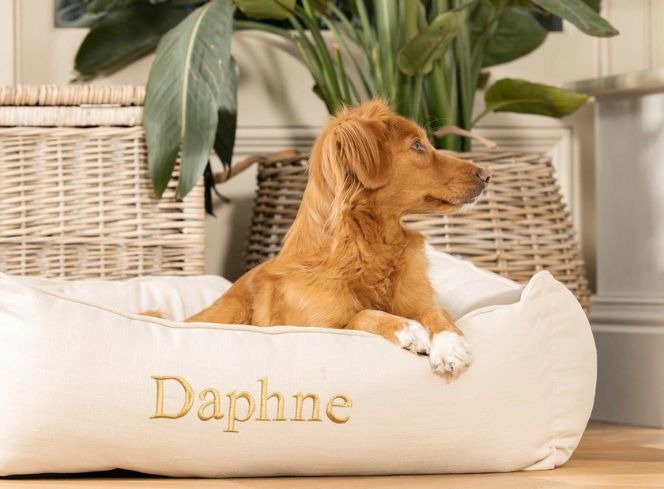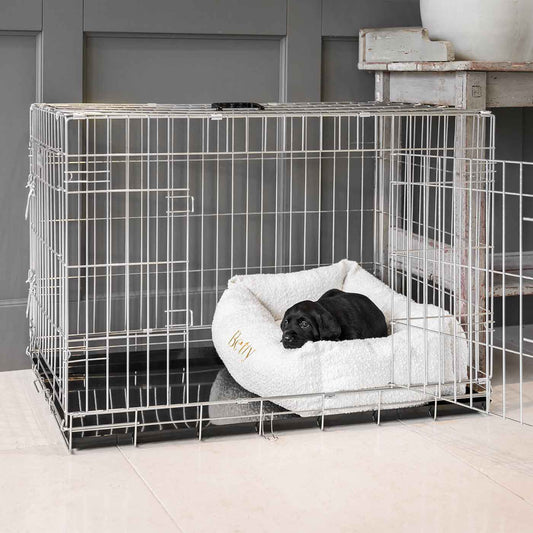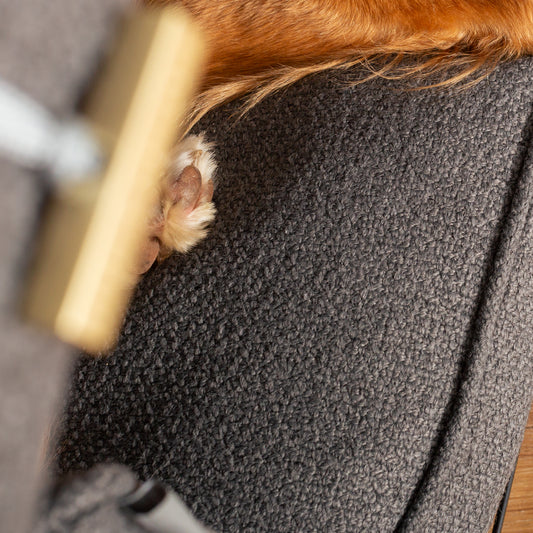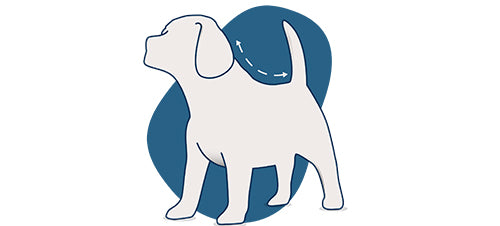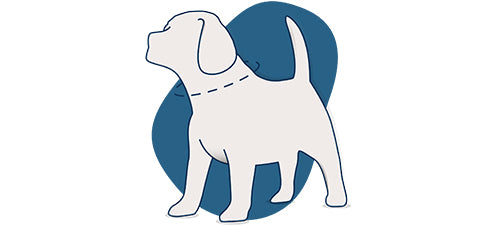As a pet owner, you know how essential it is to keep your furry friend's belongings clean and fresh. Among these items, dog beds are a haven for our beloved companions, offering comfort and security. However, over time, these cosy spots can accumulate dirt, pet hair, and odours, making regular cleaning a must. Thankfully, many modern dog beds come with removable covers or are machine machine washable, making them easy to keep clean. In this guide, we'll walk you through the process of washing a dog bed in a washing machine, ensuring that your four-legged friend's bed stays clean and comfortable.
Are Dog Beds Machine Washable?
Before we dive into the washing process, it's crucial to check if your dog's bed is machine washable. Look for tags or labels that indicate whether the bed is machine washable and if there are any specific guidelines you need to follow. Here at Lords & Labradors all of our Core Collection is machine washable, our Core Collection crate cushions and bumpers even have removable covers to make washing easier. Our Essentials Collection, however, is hand wash only. For more information on how to clean your Lords & Labradors Bed why not check out our L&L bedding guide? Or speak to our Customer Care team, who are happy to help.
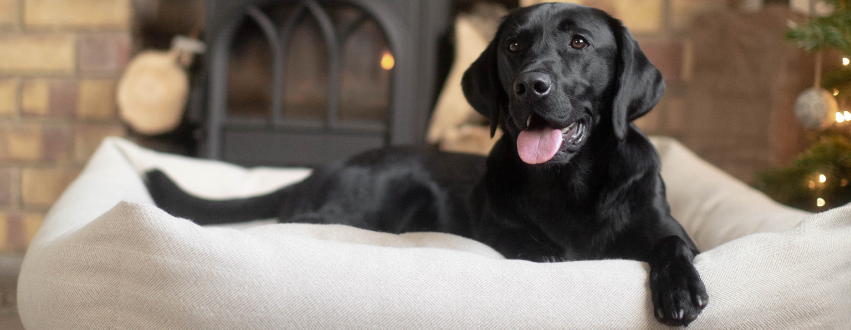
Preparing Your Dog Bed for Washing:
- Remove the Cover: If your bed has a removable cover start by unzipping or unfastening the removable cover from the bed's filling. Some beds may have a separate inner liner that encases the stuffing, so make sure to remove both the outer cover and the inner liner if applicable.
- Shake Off and Hoover Excess Dirt: Before tossing the cover into the washing machine, give it a gentle shake outside use a lint roller or a vacuum cleaner with an upholstery attachment to remove any loose fur, dirt, or debris. If your bed has an inner cushion make sure to take this out and clean underneath, crumbs and hair often end up collecting underneath there!
- Pre-Treat Stains: If you notice any stains or particularly stubborn spots on the cover, spot-treat them with a pet-safe stain remover or a mixture of mild detergent and water. Avoid using harsh chemicals that could be harmful to your pet.
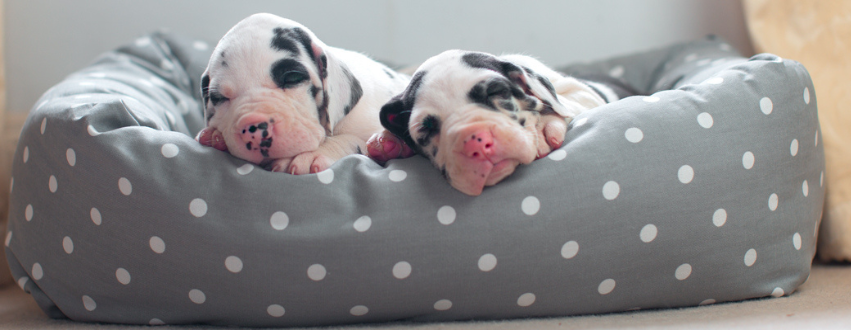
Washing Your Dog Bed:
- Read the Care Label: Always read and follow the care label on your dog bed's cover before washing. This label will provide specific instructions and precautions for washing and drying.
- Select the Right Washing Machine Settings: Set your washing machine to a gentle cycle with cold water. For L&L beds we recommend a 30 degree wash on a gentle cycle. Avoid using hot water, as it may cause the fabric to shrink or fade. Always opt for a pet-safe, hypoallergenic detergent to wash your dog bed. Regular detergents may contain harsh chemicals that could irritate your pet's skin. Additionally, avoid using fabric softeners, as they can leave a residue that may also irritate your dog.
-
Load the Machine Properly: If you’re washing a bed cover to prevent the washing machine from becoming unbalanced during the cycle, balance the load by adding a few towels or other soft items. This will ensure that the cover is cleaned evenly.
If you’re washing a bed with out a cover, they often have a removable inner cushion. If the bed is too big for your washing machine you can always try washing the two parts separately to avoid overfilling your machine. - Washing The Dog Bed: Place the cover or bed in the washing machine and start the cycle. Once the cycle is complete, remove the cover promptly to prevent wrinkles and avoid over-drying.
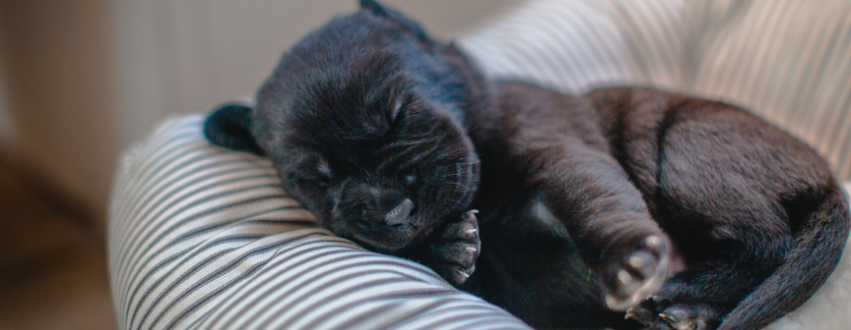
Drying Your Dog Bed:
- Air Drying: For best results and to prevent any damage to your dog’s bed, we recommend air drying. If it’s a cover you can hang it outside on a clothes line or lay it flat on a clean surface indoors, we recommend putting it back on the inner cushion to prevent shrinkage. For dog beds without removable covers, we recommend either putting it outside in a clean spot to dry off or in a warm area of your house whilst it dries. Avoid using a dryer or putting it over a radiator as high heat may cause shrinkage or damage to the cover.
- Fluffing and Reassembling: Once your dog’s bed is dry, give it a gentle shake to fluff up the filling, it may clump together during washing so will need a bit of a shake to redistribute it evenly.
- Reassembling: If your dog’s bed has a removable cover, it’s now time to reassemble, putting the cover back on the inner cushion. If the bed has zippers, ensure they are securely closed before returning it to your pup.
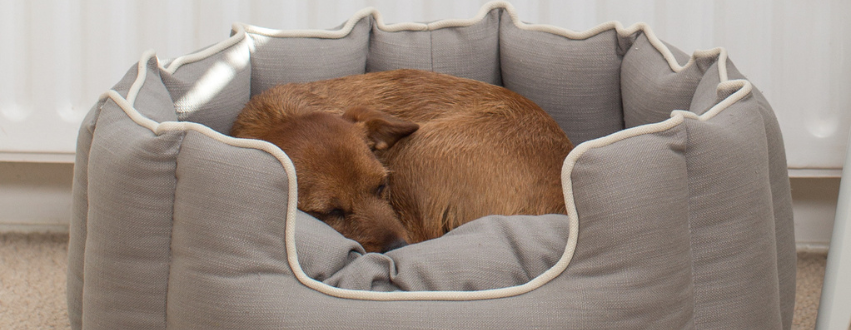
Tips for Maintaining a Clean Dog Bed:
- Regular Vacuuming: To prevent excessive dirt and hair from accumulating on your dog's bed, make a habit of vacuuming it regularly. A quick once-over with a handheld vacuum or a vacuum cleaner with an upholstery attachment can do wonders in keeping the bed clean between washes.
- Spot Cleaning: For minor spills or accidents on the dog bed, opt for spot cleaning instead of a full machine wash. Use a pet-safe, mild detergent mixed with water and a clean cloth to gently clean the affected area. Blot the stain rather than rubbing it, as rubbing can push the stain deeper into the fabric.
- Air Out the Bed: Whenever the weather permits, take advantage of sunny days to air out your dog's bed. The sunlight will help to naturally eliminate any odours, and fresh air circulation can reduce moisture buildup, which can cause mould or mildew over time.
- Using Pet-Friendly Odour Eliminators: If your dog's bed tends to hold onto odours despite regular washing, consider using pet-friendly odour eliminators. There are various options available, including sprays and powders designed specifically for pet bedding, ensuring a fresh-smelling bed for your furry friend.
- Invest in Quality Dog Beds: When purchasing a dog bed, consider investing in high-quality options that are designed for easy cleaning. Dog beds with removable, machine-washable covers not only simplify the cleaning process but also provide a durable and comfortable resting place for your pet. Here at L&L our luxury dog beds are made with upholstery grade fabric so you can be sure they will stand the test of time.
Regularly washing your dog's bed is essential for maintaining a clean and healthy environment for your furry companion. By following this step-by-step guide on how to wash a dog bed in a washing machine, you can keep your pet's bed fresh, cosy, and odour-free. Always remember to check the care instructions, use pet-safe detergent, and avoid high heat when drying to ensure the longevity of the dog bed and the comfort of your four-legged friend. Happy washing!


























